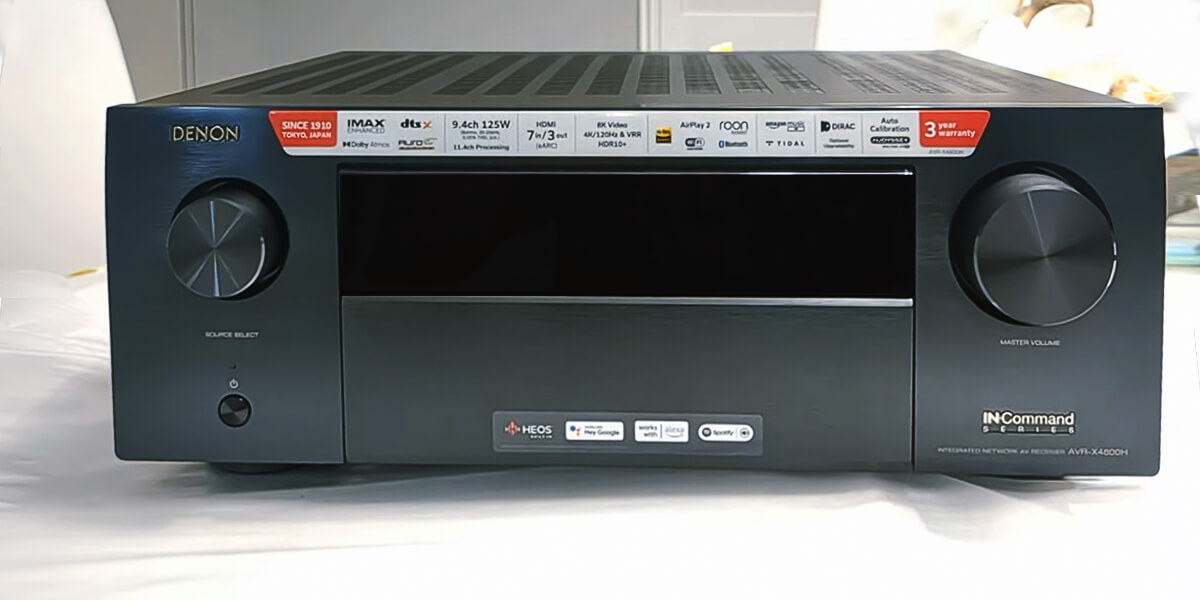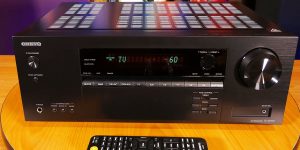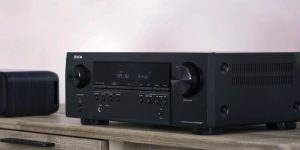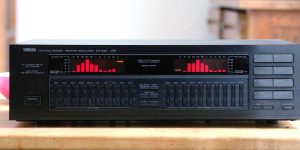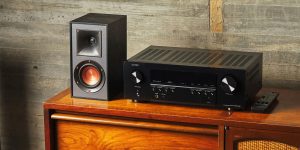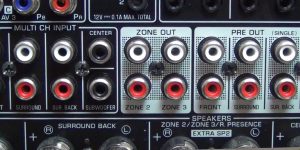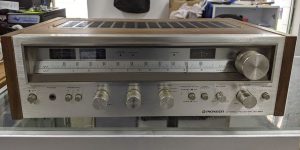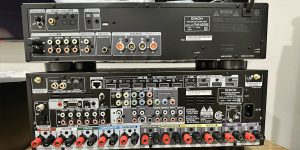Do you remember when HD was a thing? Then Full HD became the top standard and remained so for a pretty long time. After that — 2K, oh wait, we mostly skipped that. Yep, keep that 2K for the monitor you work on every day in the office. Today, we are going to talk about the best 4K receivers. It’s the new “de facto” standard for movies and gaming. 8K content is still pretty expensive and uncommon. Anyway, get geared up because the spotlight is now on receivers for 4K TVs.
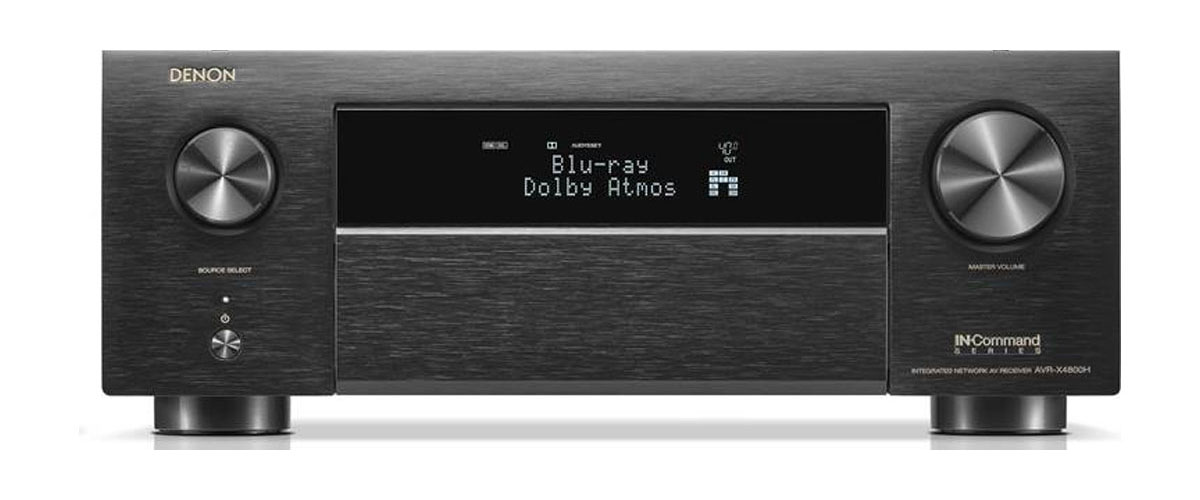
4K AV receivers comparison table
| Name | Channels | Power output | HDMI in/out | Bluetooth/Wi-Fi | Review |
|---|---|---|---|---|---|
| Denon AVR-X4800H best overall | 9.4 | 125W/8 Ohm, 165W/6 Ohm | 7/3 | yes/yes | Review |
| Denon AVR-S670H budget | 5.2 | 75W/8 Ohm, 100W/6 Ohm | 6/1 | yes/yes | Review |
| Marantz SR8015 premium | 11.2 | 140W/8 Ohm, 175W/6 Ohm | 8/3 | yes/yes | Review |
| Yamaha RX-A2A also great | 7.2 | 100W/8 Ohm | 7/1 | yes/yes | Review |
Importance of 4K in home entertainment
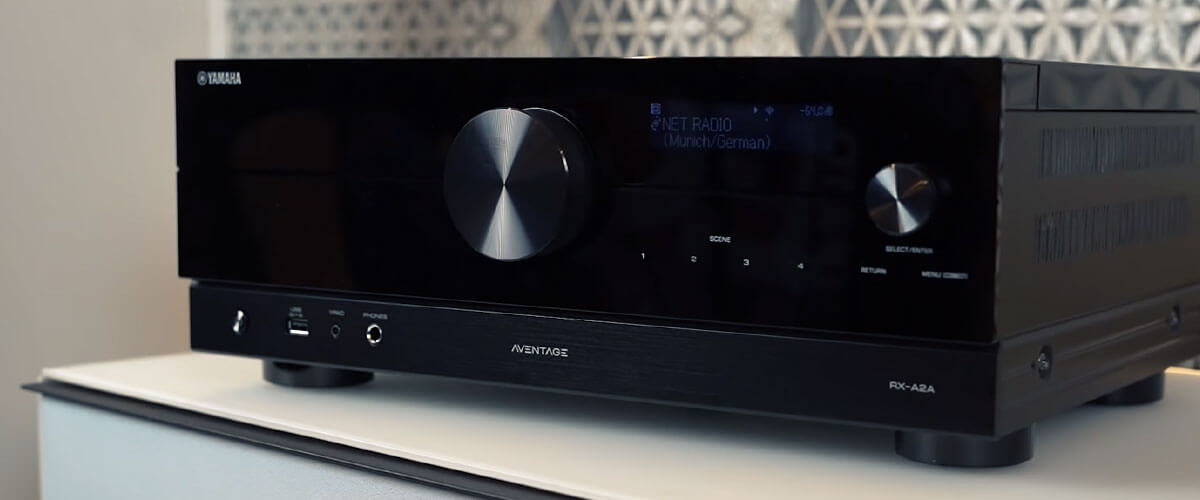
So, as I have said, the significance of 4K resolution in home entertainment cannot be overstated. The majority of content comes in 4K today. High and even middle-end consoles and personal computers can handle gaming in 4K at a pleasant 60 FPS.
Yet, the 4K has another advantage over the 8K. The latter requires too much processing power and can only come in 60Hz. At the same time, 4K doesn’t require the allocation of so many resources. It means that 4K content can now go in 120Hz, which is way smoother, especially for competitive gaming.
Several years ago, 4K was a gimmick for the rich. Today, I don’t see a point in building a home entertainment system around a surround sound receiver that doesn’t support 4K.
Best 4K receiver reviews
Denon AVR-X4800H – best overall

Of course, you came here to get the most from the review, quickly skipped the intro after a few words, and here you are — reading a review of the best 4K receiver. Denon AVR-X4800H is a truly superb one, and I do not intend to waste any minute longer — here is what takes it to today’s top.
With 9.4 channels pumping out 125W each, the AVR-X4800H is a force to be reckoned with. It gets even more interesting — do the words bright, dynamic, warm ring any bells? I bet I just made your heart beat a bit faster, hehe. Yet, if those words don’t touch the strings of your soul, don’t worry. I will explain in the very next paragraph.
Those are the sound peculiarities typical for Denon products, and the AVR-X4800H follows this tradition at its finest. If you have never tried, I definitely recommend you listen to vinyl using this bad boy — the tonal balance, bass response, and overall flatness will make you look at the music from a very different angle.
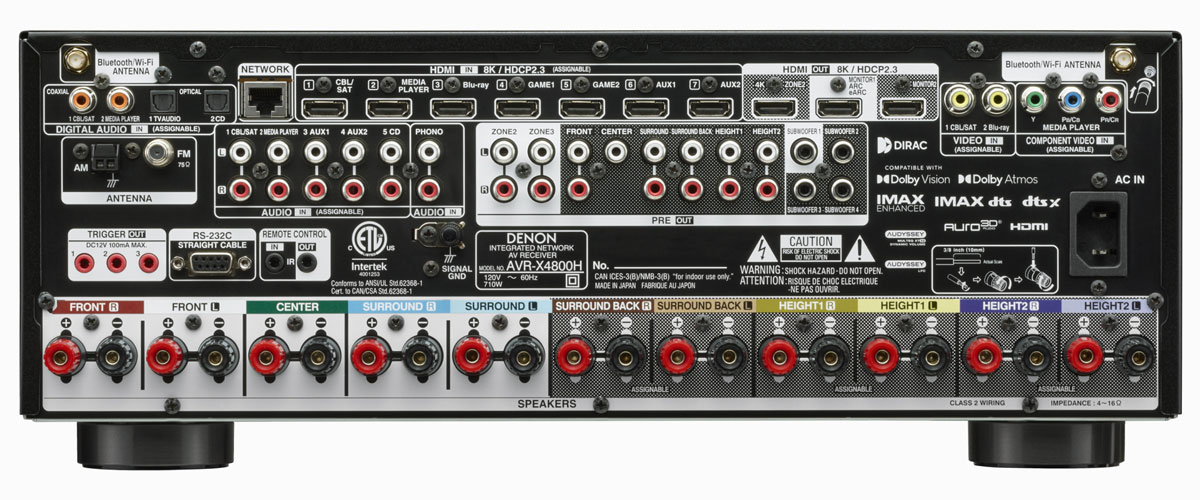
So, returning to today’s topic. The AVR-X4800H supports multiple HDMI 2.1 inputs and outputs with 8K Ultra HD support and HDCP2.3. It comes with the dazzling brightness of Dolby Vision and the nuanced shades of HDR10+. And, of course, it offers 4K 120Hz — the main testing case of this receiver for me.
Testing the AVR-X4800H with blockbuster movies was a treat for the senses. From the spine-chilling atmospheres of The Dark Knight to the visually arresting landscapes of Game of Thrones in 4K, look super-stunning. Surely, 8K adds some detail, and so on. But it also requires a way bigger investment.
Talking about sound, this receiver handled every sonic nuance with finesse. Dialogue clarity and surround sound immersion are essential, and this receiver delivers them with ease. Yep, it is just like you imagine it — like having a personal cinema in your living room. I just hope you are not a fan of daily updates because Denon doesn’t hurry much.
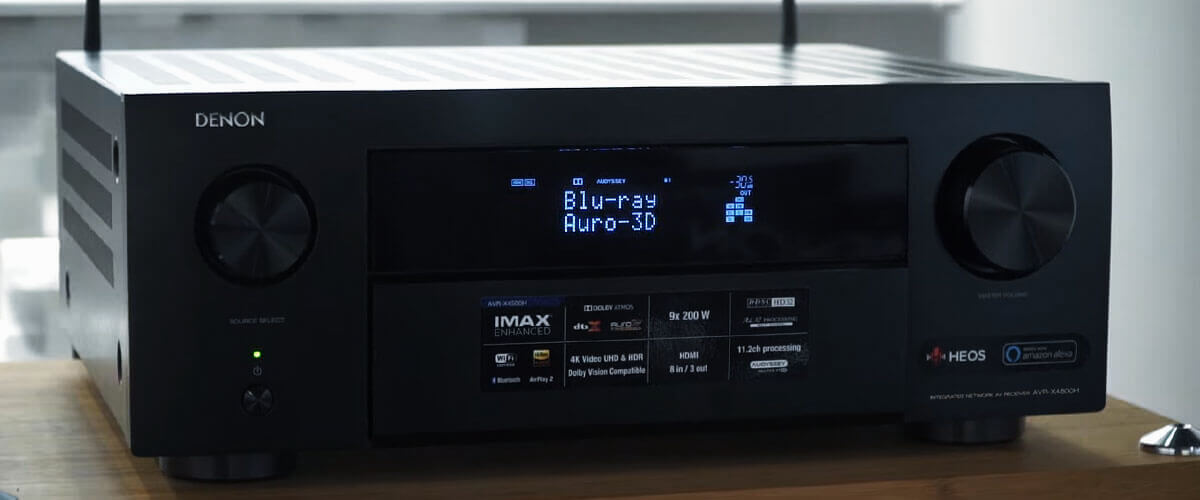
If you are a gamer (No shame here, buddy. Me too), the 4K is going to be your 90% setting for this. I took this beast for a spin with titles like Red Dead Redemption 2 and Call of Duty: Warzone. The ALLM pass-through and Variable Refresh Rate ensured a lag-free gaming experience for competitive games.
Yet, the biggest joy for me was my armchair with a gamepad, just enjoying the story-oriented Alan Wake 2. Here is what I say: if your machine can handle the Ulta at 4K and provide you with stable 120fps, the AVR-X4800H will deliver the content just the way the developers wanted you to see it.
Denon AVR-X4800H is not the most advanced receiver. Later in this review, I will show you the true pinnacle of the receiver world. But I name it the best 4K AV receiver because its balance of features, price, pros, and cons turns it into a ticket to the world where sound and visuals converge to create an unforgettable experience without the need to leave the comfort of one’s home.
Key specs
- Channels: 9.4.
- Power output: 125W/8 Ohm, 165W/6 Ohm.
- HDMI inputs/outputs: 7/3.
- Video functions: 8K/60Hz, 4K/120Hz, 4K/60Hz pass-through, video upconversion (up to 1080p and 8K) for analog and HDMI sources.
- Bluetooth/Wi-Fi: yes/yes.
- Streaming services: AirPlay2, Deezer, Tidal, Pandora, SiriusXM, Napster, SoundCloud, Amazon Music, Amazon Music HD, Mood mix.
- Supports: HDMI ARC, HDMI eARC, HDMI CEC, HDCP2.3, HDR10, HDR10+, Dolby Vision.
- Surround sound: DTS HD Master, DTS Neural:X, Dolby TrueHD, Dolby Surround, Dolby Digital Plus, Dolby Atmos Height Virtualization, Dolby Atmos, Auro-3D, IMAX Enhanced, Multichannel stereo.
Pros
- Sensational movie playback and Surround.
- The music listening experience is equally enjoyable (use a turntable).
- Shares the schematics (components) and chassis with more expansive models.
Cons
- Very rare software updates.
- I had to fine-tune it manually after using the Dirac Live calibration system.
Denon AVR-S670H – budget
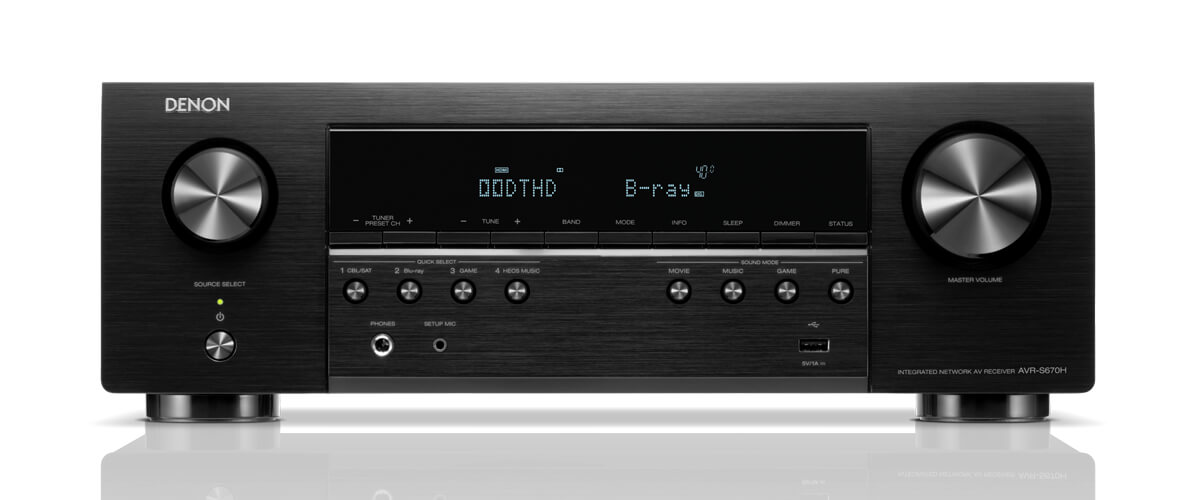
Remember I said that 4K is not a luxury but a standard resolution to consume content these days? This also means that one should have a chance to find a 4K AVR on a relatively low budget, right? You are absolutely correct. The Denon AVR-S670H is an excellent budget-friendly option, focusing on robust 4K capabilities. Let’s see why I named it the best budget 4K receiver today.
The AVR-S670H boasts a 5.2 channel configuration, delivering a power output of 75W with 8 Ohm speakers. I can’t say that this is a lot, but the main use case for this AVR is to drive a pretty cheap 5-channel system that’s not made for large rooms and space. So, I call this enough.
Equipped with 6 HDMI inputs, including 3 supporting 8K at 60Hz with the latest HDCP standard. Yep, 8K on a budget, the future is pretty much here. It also accommodates 4K at 120Hz. So, smooth gaming and movies are here. Sadly, the receiver doesn’t support QMS. This means that switching between media devices takes a lot of time. On the bright side, the AVR-S670H offers pre-outs for a 7.2 channel setup and convenient front and rear USB ports. The inclusion of Wi-Fi, Bluetooth, and Ethernet further expands its connectivity options, catering to diverse user preferences.
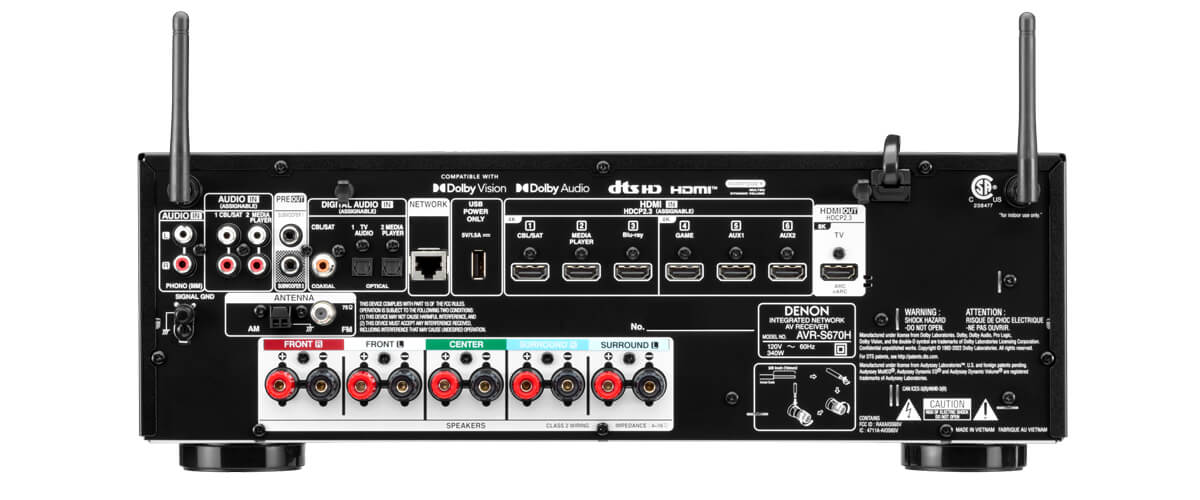
Combined with the video upscaling, you can turn almost any content into 4K or even 8K. It is a huge quality spike when moving from ordinary streaming on TV. Sadly, the Denon AVR-S670H doesn’t support DTS:X. But that’s the price of being on a budget.
In my testing, the Denon AVR-S670H demonstrated its prowess in both movies and gaming when paired with 4K sources. The clarity and detail in 4K movies were impressive, and the HDR support significantly enhanced the visual dynamics. I also watched the Boys and The Lord of the Rings: The Rings of Power on it and used 4K upscaling — it works pretty well.
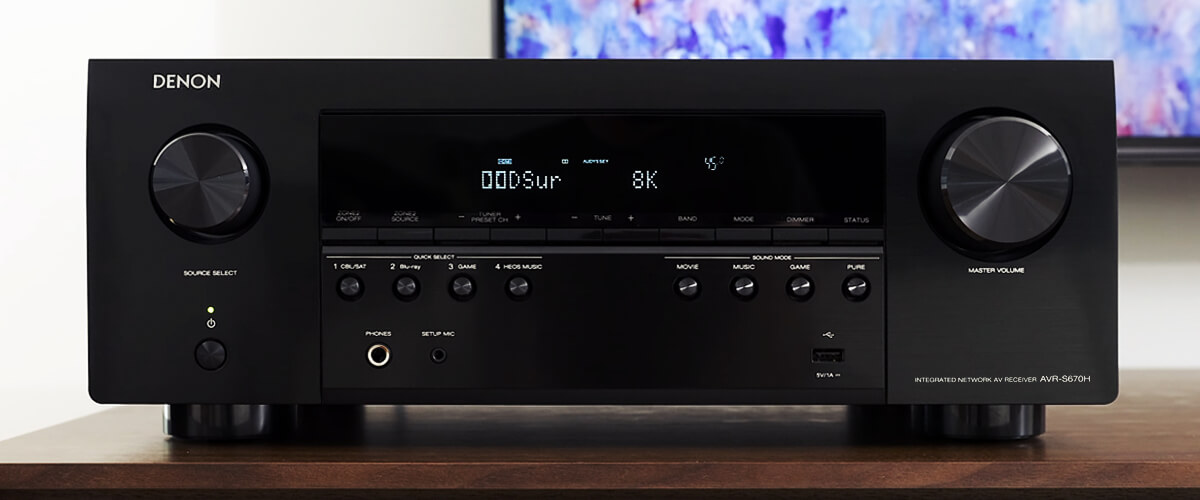
Gaming experiences were equally immersive, with the receiver handling the demands of 4K gaming seamlessly, delivering rich audio to complement the stunning visuals. And again, it is your gaming machine that will be the main limitation factor for video quality in gaming.
In conclusion, the Denon AVR-S670H is a top choice for budget-conscious consumers seeking a reliable and feature-rich AV receiver with impressive 4K capabilities. It is not as future-proof as the Denon AVR-X4800H, but they share the Denon quality and bright, dynamic, and sound typical for Denon products.
Key specs
- Channels: 5.2.
- Power output: 75W/8 Ohm, 100W/6 Ohm.
- HDMI inputs/outputs: 6/1.
- Video functions: 8K/60Hz, 4K/120Hz, 4K/60Hz pass-through, video upconversion (up to 1080p and 8K) for analog and HDMI sources.
- Bluetooth/Wi-Fi: yes/yes.
- Streaming services: AirPlay2, Deezer, Tidal, Pandora, SiriusXM, Napster, SoundCloud, Amazon Music, Amazon Music HD, Mood mix.
- Supports: HDMI ARC, HDMI eARC, HDMI CEC, HDCP2.3, HDR10, HDR10+, Dolby Vision, Dynamic HDR.
- Surround sound: DTS HD Master, DTS Neo:6, Dolby TrueHD, Dolby ProLogic II.
Pros
- Versatile HDMI Inputs with 8K capabilities.
- High-quality Denon sounding.
- Great video processing capabilities.
Cons
- Moderate power output.
- Lacks QMS and DTS:X support.
Marantz SR8015 – premium
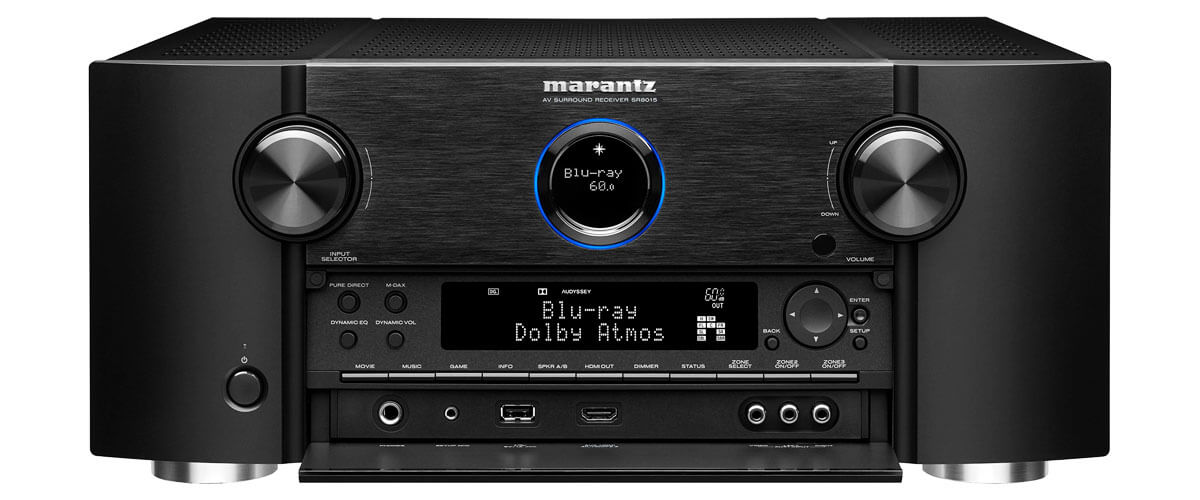
It’s good to see that you are still reading this page. Well, the time has come for the premium solution, the Marantz SR8015. When I review premium products, I always find myself in a superposition — there is so much to say about them, but at the same time, there’s so little. Is it good? It’s better than good!
This 13.2 channel 8K AV receiver is a true powerhouse. The discrete high-current power amplifiers on all channels ensure a robust performance, delivering a substantial 140 watts per channel at 8 ohms. Check out this THD — 0.05%. Yes, that means colossal power and incredible quality.
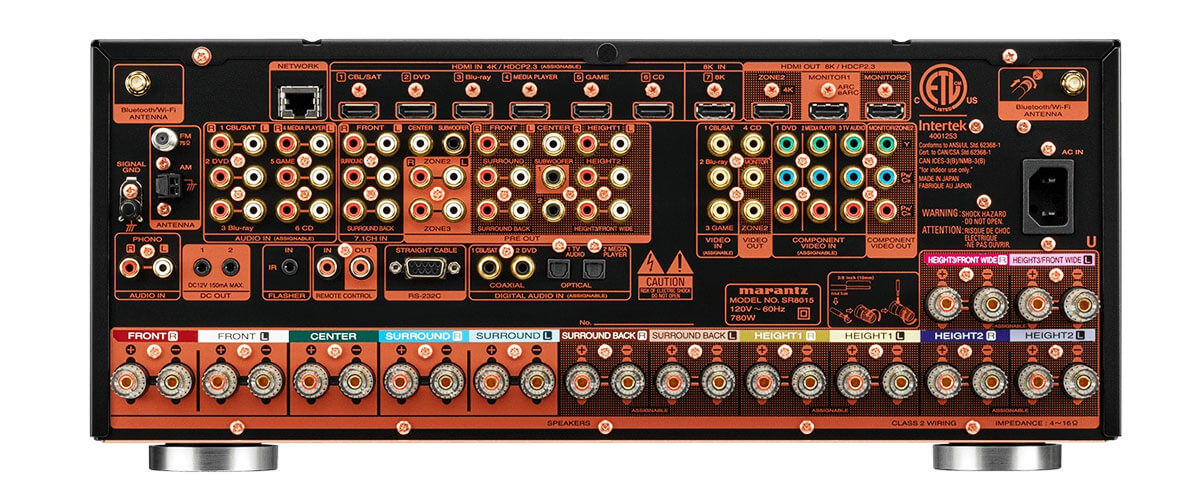
The 8 HDMI inputs and 3 outputs combined with numerous ports catered to all my favorite sources. During my testing, the receiver looked like a spider caught in its web—so many ports held different wires. If I kept it, it would take me a lot of time and effort to make the setup look neat and clean. So, keep this in mind.
Okay, so I am reviewing the 4K receivers today, but the SR8015 takes it further. Considering the support of Dolby Atmos, Dolby Atmos Height Virtualization Technology, DTS:X, DTS Virtual:X, DTS:X Pro, IMAX Enhanced, and Auro-3D processing, I generally recommend you invest in fabulous speakers, a modern 8K screen, and content.
Building a 4K entertainment center around this monster is not the smartest move. The Marantz SR8015 allows us to take it to another level, creating a full-scale home cinema setup. So, take this chance, or just opt for today’s coolest 4K HDR receiver — the Denon AVR-X4800H.
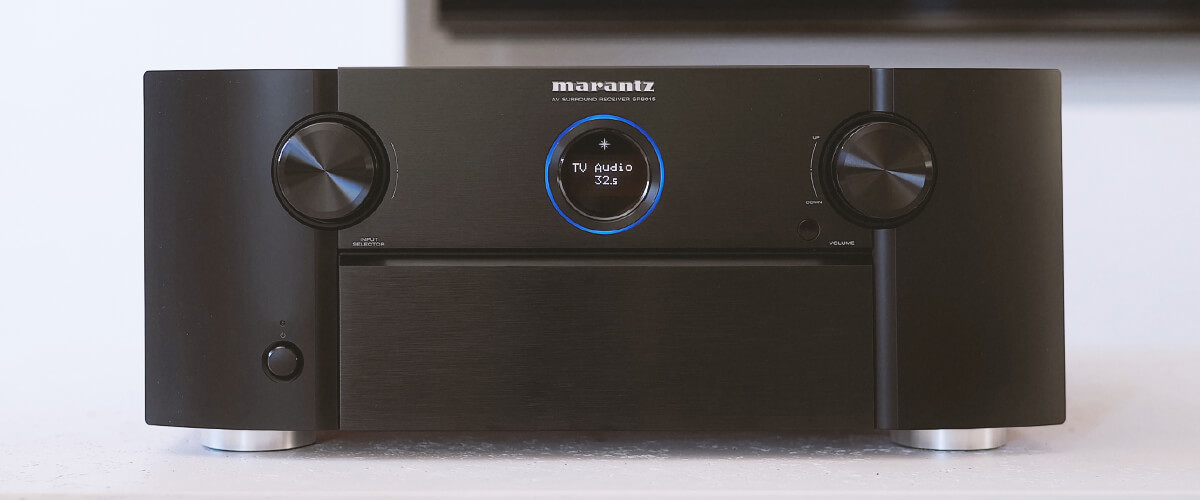
Putting the SR8015 to the test in both movies and gaming at 4K resolution was nothing short of a revelation. In movies like Lord of the Rings, Fight Club, and Mad Max: Fury Road, the Dolby Atmos, DTS:X, and Auro-3D processing capabilities delivered a three-dimensional audio experience that left my whole family in awe. Explosions resonated with a palpable intensity, and subtle details in movie soundtracks became vividly apparent.
Gaming, too, reached new heights with titles like Cyberpunk 2077 and Resident Evil 2,3,4. The support for features like ALLM and VRR enhanced the responsiveness in the fast-paced gaming of CS GO. The visual fidelity, especially in HDR, added an extra layer of realism to every gaming session.
In conclusion, the Marantz SR8015 — premium is not just an AV receiver; it’s a gateway to a cinematic and gaming journey that transcends expectations. Its 4K and 8K capabilities and advanced audio processing make it a standout choice for movies, TV series, and story-oriented gaming.
Key specs
- Channels: 11.2.
- Power output: 140W/8 Ohm, 175W/6 Ohm.
- HDMI inputs/outputs: 8/3.
- Video functions: 8K/60Hz, 4K/60Hz, 4K/120Hz, video conversion analog to HDMI, upscaling to 8K.
- Bluetooth/Wi-Fi: yes/yes.
- Streaming services: AirPlay 2, Spotify, TuneIn, Deezer, Tidal, Netflix, Amazon Prime.
- Supports: GUI overlay on HDMI, HDMI eARC, HDMI CEC, HGL, HDCP2.3, HDR10+, Dynamic HDR, Dolby Vision.
- Surround sound: DTS:X, DTS:X Pro, DTS Virtual:X, DTS Neural:X, DTS HD Master, Dolby Atmos, Dolby Atmos Height Virtualization, Dolby TrueHD, Dolby Surround, IMAX Enhanced, Auro 3D.
Pros
- This Marantz is renowned for its signature warm and detailed sound, making it ideal for vinyl.
- Stunning audio and video quality.
- Tremendous amount of power.
Cons
- Cable and wire management can be a real maze for beginners.
- Requires attention to cooling: draws a lot of power and generates even more heat when maxed out.
Yamaha RX-A2A – also great
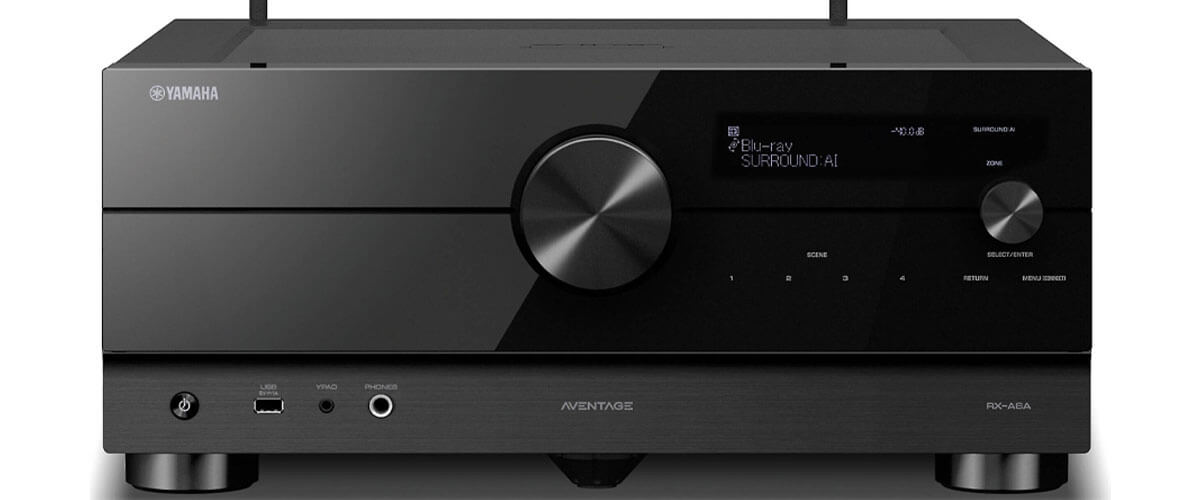
The Yamaha RX-A2A is a powerful 7.2-channel AV receiver designed to deliver an immersive audio experience while embracing the latest advancements in video technology. This home theater receiver is only a step behind the Denon AVR-X4800H.
The RX-A2A boasts a 7.2 channel configuration with a robust 100 Watts per channel, ensuring a dynamic and detailed surround sound experience. The inclusion of Zone 2 expands the audio options, allowing me to enjoy music in another room simultaneously while my kiddos were watching TV series in the main room.
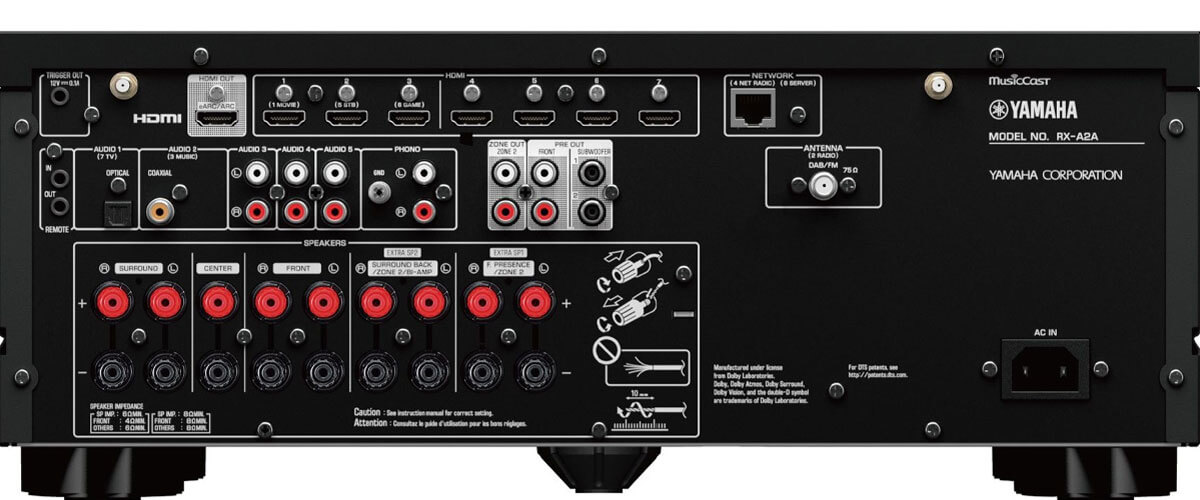
Equipped with cutting-edge 4K60 support, the RX-A2A ensures crystal-clear video quality. Including Dolby Vision, Hybrid-Log Gamma, and BT.2020 broadens the color spectrum and enhances contrast. With Wi-Fi, AirPlay 2, and Spotify Connect, the RX-A2A ensures seamless connectivity for wireless streaming.
So, is this a good receiver? Definitely! Its cold, clear, crystal, neutral, and sometimes very metallic sound, supplemented by modern video technologies, makes it a very good choice. But here is a little comparison:
The Denon AVR-X4800H offers more channels (9.4), advanced audio processing features, and additional multi-room and zone capabilities. The Yamaha RX A2A, on the other hand, is a 7.2-channel receiver with a rich set of features, including 4K60, Dolby Vision, and HDR10+. It emphasizes Dolby Atmos and DTS:X for audio processing. Now, it’s time for the tests.

In my comprehensive testing, the RX-A2A revealed its prowess with captivating 4K content. Movies such as Guardians of the Galaxy Vol. 2 showcased the receiver’s ability to handle vibrant colors and fast-paced sequences. At the same time, The Revenant demonstrated its finesse in rendering both dark and bright scenes with precision and great control over the sound stage.
In gaming, the Yamaha RX-A2A truly excelled with The Last of Us Part franchise, providing an immersive audio backdrop for intense emotional moments. The lack of 8K support is not an issue for gaming, but I sort of missed it when watching movies and TV series.
If it’s not the first my review that you read, then you already know that this category covers the receivers that have come SO close to being on top but still, for some reason, didn’t make it. The Yamaha RX-A2A stands out as a versatile and future-ready AV receiver, offering a perfect blend of high-quality audio and advanced video capabilities. Yet, I am not naming it today’s pick because of the class difference between the RX-A2A and AVR-X4800H. Still, the price comes right after the class. If you love Yamaha’s metallic, crystal-clear sound, don’t hesitate even for a moment to get the RX-A2A. This is an amazing 4K 120Hz receiver.
Key specs
- Channels: 7.2.
- Power output: 100W/8 Ohm.
- HDMI inputs/outputs: 7/1.
- Video functions: 8K/60Hz, 4K/60Hz, 4K/120Hz, HDMI upscaling up to 4K.
- Bluetooth/Wi-Fi: yes/yes.
- Streaming services: AirPlay 2, Spotify, TuneIn, Deezer, Tidal, Netflix, Amazon Prime.
- Supports: HDMI ARC, HDMI eARC, HDMI CEC, HDCP2.3, HDR10+, Dolby Vision.
- Surround sound: DTS HD Master, DTS:X, Dolby Atmos, Dolby Atmos Height Virtualization, Dolby TrueHD, Dolby Digital Plus, Dolby Surround.
Pros
- Very precisely controls the sound stage.
- Well-built and good value for money in its class.
Cons
- Doesn’t support 8K 60Hz.
- I was disappointed by a tiny display.
4K AV receiver buying guide
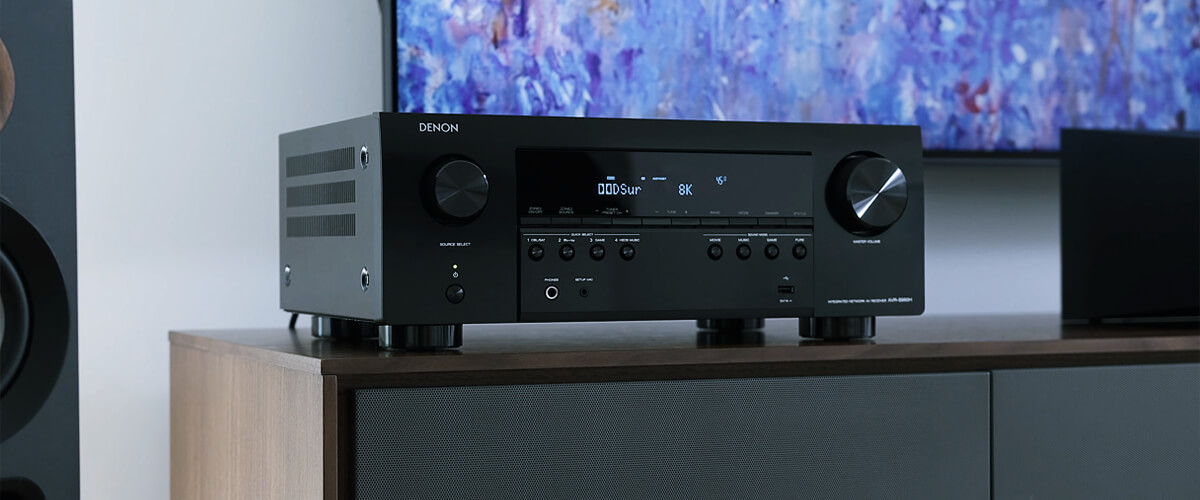
HDMI in/out
The number of HDMI ports on your audio-video receiver is essential for maximum versatility in your entertainment system. The more HDMI ports, the better, as it allows you to connect multiple devices, such as personal computers, gaming consoles, laptops, Blu-ray players, and streaming devices, simultaneously. At the same time, investing in more expensive receivers with numerous ports is not the wisest idea. The smartest option here is to count all your (including those you plan to buy in the future) source (players, consoles, etc.) and target (TVs, projectors, screens) devices and pick the unit that has enough HDMI ports.
I also recommend ensuring the unit supports a minimum of HDCP 2.2. This protection standard is required to play copyright-protected 4K content. Otherwise, you may find yourself in a pretty awkward situation, not being able to use the receiver with the majority of available content.
HDR formats support
High Dynamic Range offers a more energetic and lifelike viewing experience. It boosts contrast and widens the color spectrum, delivering more realistic images. It’s crucial for a receiver to support popular formats like HDR10, Dolby Vision, and HLG. Each format has its advantages. For example, HDR10 is widely adopted, Dolby Vision offers dynamic metadata optimization (every single scene), and HLG is suitable for broadcast content.
Having a receiver that supports these formats ensures compatibility with various HDR-enabled content sources, offering flexibility and future-proofing your entertainment setup. Modern receivers offer HDR10+ technology. In fact, it is an advanced format that builds upon the foundation of HDR10. It enhances the visual quality of content even further by incorporating dynamic metadata.
Important — apart from having a receiver that supports HDR, you also need an HDR-capable screen. Of course, your content should also come in this format.
4K pass-through
End-to-end 4K pass-through is a vital feature for a receiver. It means the receiver doesn’t decrease the signal quality when transferring it between the source and target devices. In simple words, it isn’t compromising the resolution.
This capability is essential for maintaining a high level of clarity and offering a detailed picture. Whether gaming, streaming, or watching Ultra HD Blu-rays, a receiver with 4K pass-through ensures you get all the glory of high resolution on your 4K display.
Video upscaling
Video upscaling is a technology that enhances the resolution of lower-quality video content to match the higher resolution of your 4K display. A receiver with upscaling capabilities takes standard or high-definition content and intelligently interpolates additional pixels to bring it closer to 4K quality. This is handy when dealing with older or non-4K content, as it helps improve sharpness and clarity.
Choosing a receiver with effective upscaling ensures that all your content, regardless of its original resolution, looks optimized and visually appealing on your 4K display, providing a consistent and enjoyable viewing experience.

